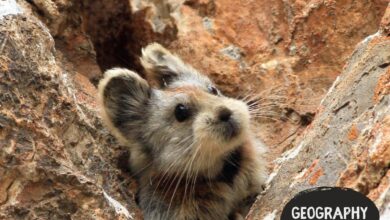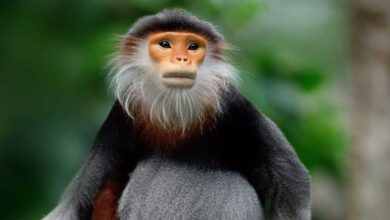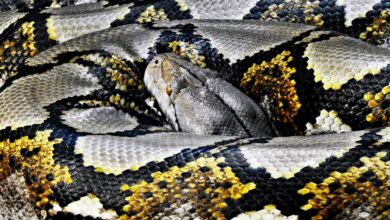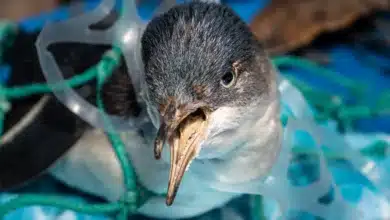Animals Great Migration
This Animals Great Migration is an ancient instinctive movement by wildebeests and zebras, and gazelles to find fresh grazing, as well as water, is a constant in the Serengeti and Mara ecosystems. The epic journey begins when the animals calve in the fertile southern plains of Tanzania’s Serengeti near the Ngorongoro Conservation Area.
The animals then make a clockwise journey north through the Serengeti before crossing into Kenya’s Masai Mara National Reserve and looping south towards the end of the year. The drama of this seamless cycle of death and life is breathtaking: predators are waiting at every stage. Thousands of animals die from lions and other predators such as cheetahs and leopards.
What is the Great Migration?
The Great Migration, the world’s largest mammal migration, is a continuous loop that spans nearly 30,000 square kilometres in the Serengeti and Mara ecosystems. It includes over 1.2 million wildebeest and 300,000 zebras. These massive herds are so dense that they can be seen from space. They have densities up to 1,000 animals/square kilometre.
Each wildebeest makes an epic journey of up to 1000 kilometres per year, driven by their ancient survival instincts. They also seek out nutrient-rich pastures. The herds are faced with life-threatening situations along the way. Mara River Crossing, one of the most dramatic migration events, is a mixture of courage, panic and tragedy as wildebeest jump into crocodile-infested water. Many animals die, being swept away by powerful currents or caught in the jaws of massive Nile Crocodiles.
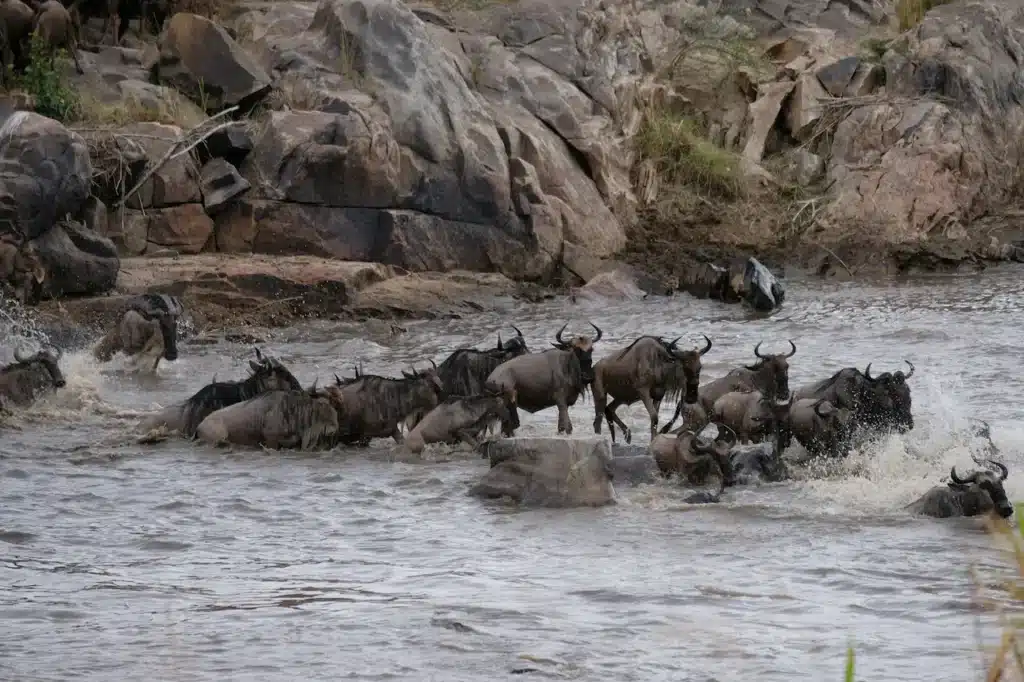
Predators are a crucial part of this eco-symphony. Predators such as lions, leopards and hyenas follow the herds to target the young, weak or injured. Up to 250.000 wildebeest are estimated to die every year during migration. Yet, these losses maintain a delicate ecosystem by providing food for many carnivores.
Why do animals migrate?
For survival, animals migrate. They move with the seasons, from one habitat to another, in search of food and suitable living conditions. They also look for safe breeding grounds. Migration is not a permanent move, like emigration. It’s a cycle that requires a return to the original habitat. Food availability is one of the main factors driving migration. In East Africa, for example, wildebeests and zebras begin their epic journey across the Serengeti, the Maasai Mara, and the Serengeti Plains following the rains. Fresh grass and water are scarce during the dry seasons. Wildebeest follow the zebras, who graze first on the taller grasses.
Migrations are also triggered by seasonal and climate changes. Monarch butterflies are one example of a multi-generational migration from Canada to Mexico in order to escape winter cold. On the way, successive generations lay eggs on milkweed, ensuring their migration. Grey whales also travel more than 10,000 km to and from their Arctic feeding grounds in Mexico to give birth.
Reproduction is also a major factor. Salmon are born in freshwater, migrate to oceans to feed and grow, and then return to their birth river to spawn and die. Caribou migrate hundreds of kilometres in the Arctic to reach calving grounds, where they can protect their young from predators.
How do animals navigate vast, unfamiliar landscapes and terrains? The animals rely on natural cues such as the position of the sun, the stars, Earth’s magnetic field and temperature changes, but also chemical scents or visual landmarks. Over millennia, this intricate navigational skill has evolved, allowing species to make perilous journeys with astonishing accuracy. Migrations are important for maintaining ecosystems, as they support individual species and redistribute nutrients.
List of Animal Migrations Around the World
1. Elephant
Between July and October each year, thousands of wildlife enthusiasts flock to the Minneriya and Kaudulla National Parks in Sri Lanka to see an incredible natural phenomenon. Over 300 wild elephants gather every year. This annual elephant migration, known as ” The Gathering”, has been observed for centuries. It is the largest concentration of Asian wild elephants in the world.
2. Topi
East Africa hosts another impressive antelope migration that is less well-known than the Great Wildebeest migration. You can also see large herds of topi on the Serengeti Plains near and Beyond Grumeti Serengeti Tented Camp. This is between December and February.
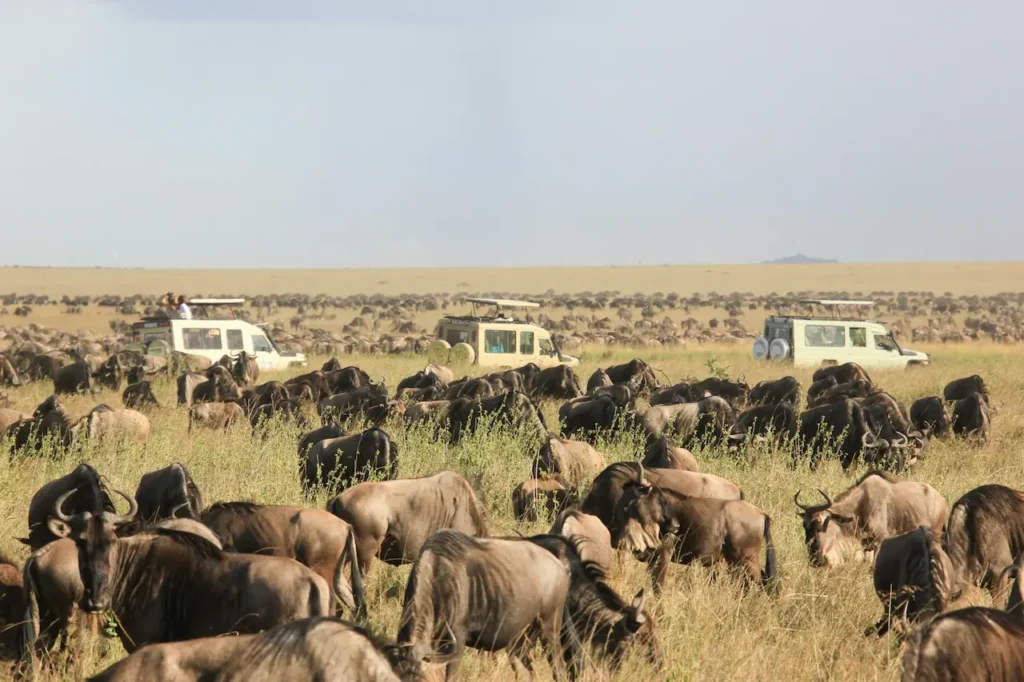
3. Wildebeest
Wildebeest are faced with many challenges during their migration. From predator-filled plains to treacherous rivers teeming with crocodiles, they face a variety of obstacles. Lions, leopards and cheetahs are all closely following the herds to take advantage of their abundance of prey. Even obstacles like fast-flowing rivers, steep embankments and exhaustion can kill thousands of animals. For every death, a new life is born. In the southern Serengeti, during the calving period (January to March), more than 500,000 calves will be born in just a few short weeks. This replenishes the herds while continuing the ancient cycle.
The Serengeti and Mara ecosystem is fueled by this extraordinary migration. The grazing patterns rejuvenate grasslands, while predators depend on them. Innumerable other species benefit from its abundance, including vultures and dung beetles. The Great Migration, often referred to as ” the greatest wildlife show on Earth,” is a living testimony to the resilience of nature and the intricate balance between Africa’s ecosystems.
4. Flamingo
As flamingos flock in large numbers between the many alkaline Lakes of Tanzania, you will be able to see a sea of pink. As food sources diminish and breeding season approaches, these elegant birds migrate from one lake to another. They can usually be found at Beyond Lake Manyara Tree Lodge between June and September, as well as again from January to February, depending on the weather.
5. Humpback whales
It is not surprising that the largest mammal in the world, the whale, makes the longest migration. The humpback whales travel further than any other species to reach their breeding and feeding grounds.
Between July and September, these mighty mammals, along with their calves, pass the coasts of Mozambique’s Quirimbas Archipelago. This makes for great whale-watching. The humpback season is from May to December in South Africa as well as South America. These mighty whales, which have migrated from Antarctica, give birth to their young in the warm waters of Ecuador between June and October.
6. Black-necked Crane
The endangered black-necked crane spends the summer breeding on the Tibetan Plateau. Every year, from late October until mid-February, more than 300 cranes migrate to Bhutan’s Phobjikha Valley. They always loop around the Gangtey Goempa Monastery three times.
7. Sea turtle
Sea turtles return to their birthplace to lay eggs, a ritual that has been around for centuries. They travel thousands of kilometres between nesting and foraging sites.
Between November and January each year, huge 700 kg leatherback turtles and loggerheads emerge out of the Indian Ocean and lay their eggs in Sodwana Bay, near and Beyond Phinda Private Game Reserve.
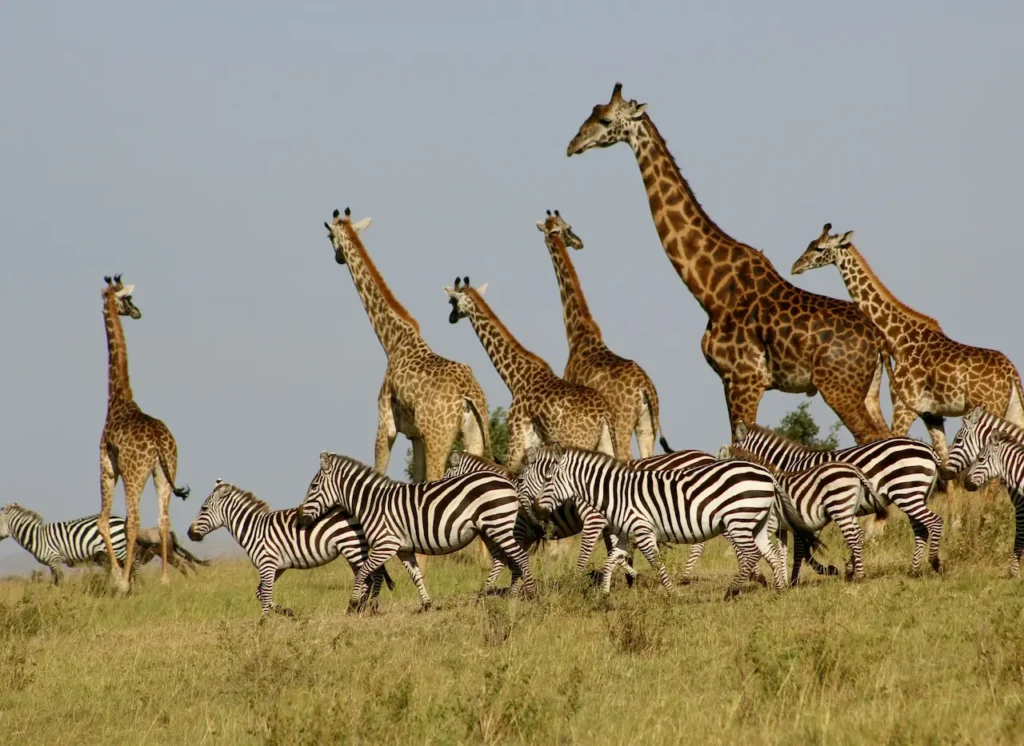
8. Zebra
The Zebra Migration is one of Africa’s greatest wildlife spectacles and a vital part of the continent’s ecological cycle. Each year, tens of thousands of plains zebras journey across grasslands and savannahs from May to October, following seasonal rains in search of water and fresh grazing.
In Botswana’s Makgadikgadi and Nxai Pan National Parks, zebras undertake the world’s longest terrestrial mammal migration, travelling over 500 km (300 miles) between the Chobe River floodplains and Makgadikgadi salt pans. This arduous journey is fraught with dangers, including predators like hyenas and crocodiles.
Moving in large herds helps zebras avoid predators, find food during dry seasons, and prevent overgrazing, which keeps ecosystems healthy. Interestingly, they often lead other herbivores like wildebeests and gazelles, as their hardy digestive systems can process tougher grasses, leaving fresher shoots for followers. This epic migration showcases the resilience and adaptability of zebras, maintaining a fragile balance in Africa’s wilderness.
9. Penguins
From September to late February/early March, these “tuxedo-clad” Magellanic penguins breed in large colonies on the coasts of Chile, Argentina, and Brazil. The flightless birds migrate north to Brazil between March and September in search of warmer temperatures.
10. Bats
The great bat migration, which is becoming increasingly popular in Zambia’s Kasanka National Park, may not be to everyone’s taste. Fruit bats are attracted to the dense swamp forest of Kasanka by the seed-rich fruits on the trees. They arrive in large numbers towards the end of October. A few weeks later, over eight million bats occupy a small area of about a hectare. This continues until the beginning of January.
Great Migration Environmental Challenges
The Great Migration is a spectacular display of nature, as millions of wildebeests, zebras and gazelles cross the Serengeti/Mara ecosystem. Their movement also intensifies the existing environmental pressures. The sheer number of animals, over 2 million in all, puts immense pressure on the grasslands that they traverse. These migratory animals play an important ecological role, cycling nutrients and stimulating plant growth by grazing. However, overgrazing can cause soil erosion and loss of vegetation, as well as slower grassland recovery. This is especially true in areas already affected by drought and climate change.
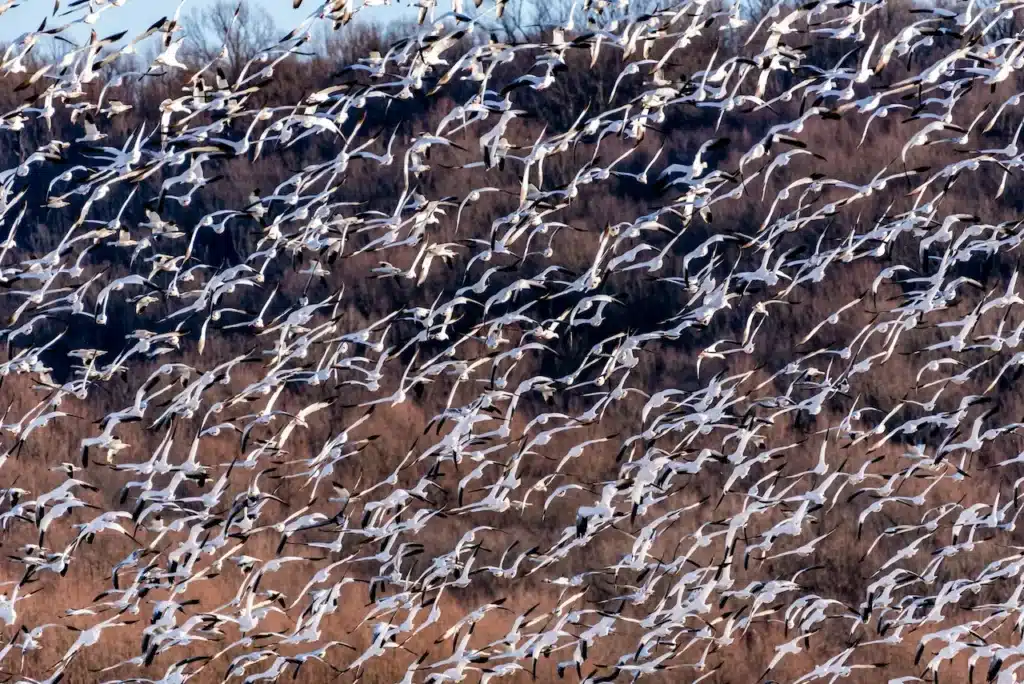
Water resources are also put under pressure during migration. The daily consumption of hundreds of thousands of litres of water by herds can be devastating to local wildlife and the environment. The landscape is left vulnerable as seasonal rivers and watering spots are rapidly exhausted.
Increased human settlements, agricultural practices, and fences fragment these ancient migration routes and block access to vital grazing lands. Herds are forced to overcrowd small areas, which increases overgrazing and causes water scarcity.
The dramatic river crossings are not only a natural spectacle, but also present an ecological challenge. The sudden inflow of organic matter into rivers caused by large numbers of animals drowning or being attacked by crocodiles can temporarily change the water quality and negatively affect aquatic life. Carcasses are a source of nutrients for rivers, but can also disrupt aquatic ecosystems if they become too concentrated.
Climate change is intensifying drought cycles, and as human activity increases, the resilience of the epic migration and the ecosystems that depend on it are increasingly threatened. Conservation efforts are now focused on maintaining open migratory routes and a balance between local wildlife and human populations.
